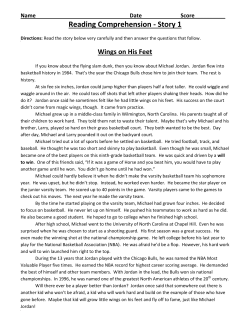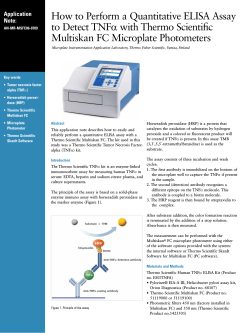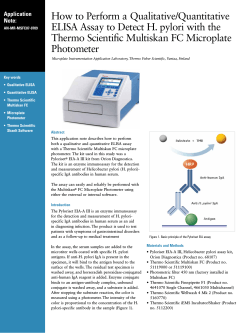
Document 238056
٩٠٥٧٢١ א א Wisdom א א א א aalmatar@ju.edu.jo اﻟﺠﺎﻡﻌﺔ اﻻردﻥﻴﺔ, ﻗﺴﻢ اﻟﻬﻨﺪﺳﺔ اﻟﻜﻴﻤﻴﺎﺋﻴﺔ, ﻋﻠﻲ ﺧﻠﻒ اﻟﻤﻄﺮ.د ©2003: Ali Al-Matar, Chemical Engineering Dept., University of Jordan א א א א Lecture 01 Introduction & Basic Concepts א . When a wise man does not understand, he says, 'I do not understand.' The fool and the uncultured are ashamed of their ignorance. They remain silent when a question could bring them wisdom." Saying of the ABBODS from The God Makers by Frank Herbert aalmatar@ju.edu.jo Thermo I-Lecture 01: Introduction & Definitions 2 What is Thermodynamics? The Premises: First Law: Total energy is conserved. Second Law: Entropy increases. Thermo I-Lecture 01: Introduction & Definitions 3 aalmatar@ju.edu.jo اﻟﺠﺎﻡﻌﺔ اﻻردﻥﻴﺔ, ﻗﺴﻢ اﻟﻬﻨﺪﺳﺔ اﻟﻜﻴﻤﻴﺎﺋﻴﺔ, ﻋﻠﻲ ﺧﻠﻒ اﻟﻤﻄﺮ.د ©2003: Ali Al-Matar, Chemical Engineering Dept., University of Jordan aalmatar@ju.edu.jo اﻟﺠﺎﻡﻌﺔ اﻻردﻥﻴﺔ, ﻗﺴﻢ اﻟﻬﻨﺪﺳﺔ اﻟﻜﻴﻤﻴﺎﺋﻴﺔ, ﻋﻠﻲ ﺧﻠﻒ اﻟﻤﻄﺮ.د ©2003: Ali Al-Matar, Chemical Engineering Dept., University of Jordan A theory is the more impressive the greater the simplicity of its premises is, the more different kinds of things it relates, and the more extended is its area of applicability. Therefore the deep impression which classical thermodynamics made upon me. Albert Einstein Thermodynamics is the study of the changes in the state or condition of a substance when changes in its temperature, state of aggregation, or its internal energy are important. Thermodynamics is based upon experimental observation. There are five postulates (laws) of thermodynamics. Two postulates deal with energy transformation, and the other three deal with properties. Thermo I-Lecture 01: Introduction & Definitions 4 1 Thermodynamic Postulates: Energy Transformation laws Thermodynamic Postulates: Property Relationships First law of thermodynamics. conservation In a game; you can’t win, even you can’t break even, and the worst thing is that you have to keep on playing. Thermo I-Lecture 01: Introduction & Definitions aalmatar@ju.edu.jo اﻟﺠﺎﻡﻌﺔ اﻻردﻥﻴﺔ, ﻗﺴﻢ اﻟﻬﻨﺪﺳﺔ اﻟﻜﻴﻤﻴﺎﺋﻴﺔ, ﻋﻠﻲ ﺧﻠﻒ اﻟﻤﻄﺮ.د ©2003: Ali Al-Matar, Chemical Engineering Dept., University of Jordan aalmatar@ju.edu.jo اﻟﺠﺎﻡﻌﺔ اﻻردﻥﻴﺔ, ﻗﺴﻢ اﻟﻬﻨﺪﺳﺔ اﻟﻜﻴﻤﻴﺎﺋﻴﺔ, ﻋﻠﻲ ﺧﻠﻒ اﻟﻤﻄﺮ.د ©2003: Ali Al-Matar, Chemical Engineering Dept., University of Jordan of energy – you can’t get more than what you invest. Second law of thermodynamics. It is not possible to convert all the energy of a system into useful work – you can eat as much as you want, eventually, something has to come out. 5 each of two systems is in thermal equilibrium with a third system, they are also in thermal equilibrium with each other. Third Law of Thermodynamics- The entropy of a perfect crystal is zero at absolute zero temperature. State Postulate- The state of a simple, single phase thermodynamic system is completely specified by two independently variable, intensive properties. Thermo I-Lecture 01: Introduction & Definitions What is Not Thermodynamics? 6 Macroscopic Versus Microscopic Any (thermodynamic) system can be described macroscopically or microscopically. Thermodynamics does not study system dynamics. aalmatar@ju.edu.jo اﻟﺠﺎﻡﻌﺔ اﻻردﻥﻴﺔ, ﻗﺴﻢ اﻟﻬﻨﺪﺳﺔ اﻟﻜﻴﻤﻴﺎﺋﻴﺔ, ﻋﻠﻲ ﺧﻠﻒ اﻟﻤﻄﺮ.د ©2003: Ali Al-Matar, Chemical Engineering Dept., University of Jordan aalmatar@ju.edu.jo اﻟﺠﺎﻡﻌﺔ اﻻردﻥﻴﺔ, ﻗﺴﻢ اﻟﻬﻨﺪﺳﺔ اﻟﻜﻴﻤﻴﺎﺋﻴﺔ, ﻋﻠﻲ ﺧﻠﻒ اﻟﻤﻄﺮ.د ©2003: Ali Al-Matar, Chemical Engineering Dept., University of Jordan That is, it is not concerned with answering: how fast a system will respond to changes in a constraint or more? Thermodynamic considerations do not establish the rates of chemical or physical processes. Rates depend on both driving forces and resistances. Driving forces are thermodynamic variables, resistances are not. Thermodynamics is unable to reveal the microscopic mechanisms of physical or chemical processes. Thermo I-Lecture 01: Introduction & Definitions Zeroth law of thermodynamics- When 7 The macroscopic approach considers the system as a continuum. This results in the system being described by few variables e.g. pressure, temperature, density etc. The macroscopic approach is the domain of classical thermodynamics. The microscopic approach considers the detailed molecular nature of the system. This results in the system being described by a huge number of variables. We need to specify at least the coordinates and the momenta of the molecules to describe the system. The microscopic approach is the domain of statistical and quantum mechanics. Thermo I-Lecture 01: Introduction & Definitions 8 2 Many Faceted Science Statistical Mechanics explains the macroscopic Classical thermodynamics Thermo I-Lecture 01: Introduction & Definitions aalmatar@ju.edu.jo اﻟﺠﺎﻡﻌﺔ اﻻردﻥﻴﺔ, ﻗﺴﻢ اﻟﻬﻨﺪﺳﺔ اﻟﻜﻴﻤﻴﺎﺋﻴﺔ, ﻋﻠﻲ ﺧﻠﻒ اﻟﻤﻄﺮ.د ©2003: Ali Al-Matar, Chemical Engineering Dept., University of Jordan aalmatar@ju.edu.jo اﻟﺠﺎﻡﻌﺔ اﻻردﻥﻴﺔ, ﻗﺴﻢ اﻟﻬﻨﺪﺳﺔ اﻟﻜﻴﻤﻴﺎﺋﻴﺔ, ﻋﻠﻲ ﺧﻠﻒ اﻟﻤﻄﺮ.د ©2003: Ali Al-Matar, Chemical Engineering Dept., University of Jordan properties of matter in terms of its microscopic details. Thus it enables us to calculate thermodynamic variables of a system in terms of a microscopic model of that system. Statistical mechanics has a predictive power. The tools of statistical mechanics are general, but the microscopic models are system-specific. Thermodynamics provides a description of the macroscopic properties of matter and their interrelationships. The laws of thermodynamics impose inviolable constraints on the behavior of systems. Thermodynamics is completely general. It applies to all systems and therein lies its power. Its results do not depend on the microscopic model of the system. 9 Engineering skills & vocabulary Mathematical & computer skills Measurable Measurable(observable) (observable)quantities quantities Temperature, Temperature,pressure, pressure,density, density,heat heatcapacity, capacity,composition composition Conservation equations in – out + generation = accumulation Conserved quantities Mass Moles Atoms } Material balances Desired products • Petrochemicals • • • • Biochemicals Advanced materials Environmental Nuclear Energy Abstract Abstract(conceptual) (conceptual)quantities quantities Enthalpy, Enthalpy,entropy, entropy,chemical chemicalpotential, potential,fugacity fugacity Result Result(product, (product,outcome) outcome) Energy Energyflow flow Required Required heat heat Thermo I-Lecture 01: Introduction & Definitions 10 Road Map to Concepts aalmatar@ju.edu.jo اﻟﺠﺎﻡﻌﺔ اﻻردﻥﻴﺔ, ﻗﺴﻢ اﻟﻬﻨﺪﺳﺔ اﻟﻜﻴﻤﻴﺎﺋﻴﺔ, ﻋﻠﻲ ﺧﻠﻒ اﻟﻤﻄﺮ.د ©2003: Ali Al-Matar, Chemical Engineering Dept., University of Jordan aalmatar@ju.edu.jo اﻟﺠﺎﻡﻌﺔ اﻻردﻥﻴﺔ, ﻗﺴﻢ اﻟﻬﻨﺪﺳﺔ اﻟﻜﻴﻤﻴﺎﺋﻴﺔ, ﻋﻠﻲ ﺧﻠﻒ اﻟﻤﻄﺮ.د ©2003: Ali Al-Matar, Chemical Engineering Dept., University of Jordan Systems of units (SI, British etc.) Statistical thermo. Thermo I-Lecture 01: Introduction & Definitions The Road Map to Thermodynamics Physical properties (H, U, Cp, Cv etc.) Quantum thermo. 11 Required Required work work Equilibrium Equilibrium Change Change ininstate state Thermo I-Lecture 01: Introduction & Definitions Chemical Chemical equilibria equilibria Phase Phase equilibria equilibria Combined phase Combined phase & chemical eqm. & chemical eqm. 12 3 Applications of Thermodynamics Human Human body body and and health health A system is a three dimensional region of space DNA DNA && Protein Protein folding folding Chemical Chemical Plants Plants aalmatar@ju.edu.jo اﻟﺠﺎﻡﻌﺔ اﻻردﻥﻴﺔ, ﻗﺴﻢ اﻟﻬﻨﺪﺳﺔ اﻟﻜﻴﻤﻴﺎﺋﻴﺔ, ﻋﻠﻲ ﺧﻠﻒ اﻟﻤﻄﺮ.د ©2003: Ali Al-Matar, Chemical Engineering Dept., University of Jordan aalmatar@ju.edu.jo اﻟﺠﺎﻡﻌﺔ اﻻردﻥﻴﺔ, ﻗﺴﻢ اﻟﻬﻨﺪﺳﺔ اﻟﻜﻴﻤﻴﺎﺋﻴﺔ, ﻋﻠﻲ ﺧﻠﻒ اﻟﻤﻄﺮ.د ©2003: Ali Al-Matar, Chemical Engineering Dept., University of Jordan Space Space System, Surroundings & Universe Refrigeration Refrigeration systems systems THERMODYNAMICS THERMODYNAMICS Advanced Advanced Materials Materials Power Power plants plants Automotives Automotives Drug Drug discovery discovery Air Air conditioning conditioning Airplanes Airplanes Thermo I-Lecture 01: Introduction & Definitions 13 May be real or imaginary May change size or shape May be at rest or in motion The surroundings (or environment) is the region of physical space outside the arbitrarily selected boundaries of the system. The universe is the system and its surroundings. 14 Contact Mechanisms aalmatar@ju.edu.jo اﻟﺠﺎﻡﻌﺔ اﻻردﻥﻴﺔ, ﻗﺴﻢ اﻟﻬﻨﺪﺳﺔ اﻟﻜﻴﻤﻴﺎﺋﻴﺔ, ﻋﻠﻲ ﺧﻠﻒ اﻟﻤﻄﺮ.د ©2003: Ali Al-Matar, Chemical Engineering Dept., University of Jordan aalmatar@ju.edu.jo اﻟﺠﺎﻡﻌﺔ اﻻردﻥﻴﺔ, ﻗﺴﻢ اﻟﻬﻨﺪﺳﺔ اﻟﻜﻴﻤﻴﺎﺋﻴﺔ, ﻋﻠﻲ ﺧﻠﻒ اﻟﻤﻄﺮ.د ©2003: Ali Al-Matar, Chemical Engineering Dept., University of Jordan Thermo I-Lecture 01: Introduction & Definitions System Water Water Thermo I-Lecture 01: Introduction & Definitions Universe = System + Surroundings Universe bounded by arbitrary surfaces called walls or boundaries which delineate the portion of the universe we are interested in studying. The walls or boundaries Surroundings 15 The system can be in contact with its surroundings by three distinct mechanisms: Mechanical contact. Changes in the pressure in the surroundings leads to change in the pressure of the system. Thermal contact. Changes in the temperature in the surroundings leads to change in the temperature of the system. Material/Chemical contact. The system and surroundings are able to exchange matter. Thermo I-Lecture 01: Introduction & Definitions 16 4 Types of Systems Thermodynamic Properties Isolated. Changes in the surroundings do not lead Thermo I-Lecture 01: Introduction & Definitions aalmatar@ju.edu.jo اﻟﺠﺎﻡﻌﺔ اﻻردﻥﻴﺔ, ﻗﺴﻢ اﻟﻬﻨﺪﺳﺔ اﻟﻜﻴﻤﻴﺎﺋﻴﺔ, ﻋﻠﻲ ﺧﻠﻒ اﻟﻤﻄﺮ.د ©2003: Ali Al-Matar, Chemical Engineering Dept., University of Jordan aalmatar@ju.edu.jo اﻟﺠﺎﻡﻌﺔ اﻻردﻥﻴﺔ, ﻗﺴﻢ اﻟﻬﻨﺪﺳﺔ اﻟﻜﻴﻤﻴﺎﺋﻴﺔ, ﻋﻠﻲ ﺧﻠﻒ اﻟﻤﻄﺮ.د ©2003: Ali Al-Matar, Chemical Engineering Dept., University of Jordan to changes in the system i.e. there is no mode of contact between the system and its surroundings. Closed. Mass is not allowed to be exchanged between the system and its surroundings. Adiabatic. The system is prevented from being in thermal contact with its surroundings. Open. Mass is allowed to be exchanged between the system and its surroundings. 17 variables called properties which can either be intensive or extensive. Any of the intensive variables of the equilibrium system e.g. T, P, specific volume, specific energy etc. is a state variable. The value of any state variable depends only on the equilibrium state of the system, not on the path by which the equilibrium state was reached. Thermo I-Lecture 01: Introduction & Definitions Extrinsic and Intrinsic Properties 18 Intensive & Extensive Variables I Extrinsic properties are quantities whose value is independent of the nature of the substance within the system boundaries e.g., translational and rotational velocities of a body around its center Intrinsic properties are quantities whose value depend on the nature of the substance composing the system e.g., density, pressure, and temperature. 19 aalmatar@ju.edu.jo اﻟﺠﺎﻡﻌﺔ اﻻردﻥﻴﺔ, ﻗﺴﻢ اﻟﻬﻨﺪﺳﺔ اﻟﻜﻴﻤﻴﺎﺋﻴﺔ, ﻋﻠﻲ ﺧﻠﻒ اﻟﻤﻄﺮ.د ©2003: Ali Al-Matar, Chemical Engineering Dept., University of Jordan aalmatar@ju.edu.jo اﻟﺠﺎﻡﻌﺔ اﻻردﻥﻴﺔ, ﻗﺴﻢ اﻟﻬﻨﺪﺳﺔ اﻟﻜﻴﻤﻴﺎﺋﻴﺔ, ﻋﻠﻲ ﺧﻠﻒ اﻟﻤﻄﺮ.د ©2003: Ali Al-Matar, Chemical Engineering Dept., University of Jordan Properties can be split into two classes Thermo I-Lecture 01: Introduction & Definitions A system is characterized by thermodynamic Intensive variables are variables that are independent of the size of the system e.g. T, P, Density etc. Intensive variables can vary throughout the system (local distributions, nonisotropic). Extensive variables are variables that scale with the size of the system, and are proportional to its volume, if other conditions are kept constant e.g. mass, volume, total energy etc. Thermo I-Lecture 01: Introduction & Definitions 20 5 Intensive & Extensive variables II Conjugate Variables Pressure & Volume aalmatar@ju.edu.jo اﻟﺠﺎﻡﻌﺔ اﻻردﻥﻴﺔ, ﻗﺴﻢ اﻟﻬﻨﺪﺳﺔ اﻟﻜﻴﻤﻴﺎﺋﻴﺔ, ﻋﻠﻲ ﺧﻠﻒ اﻟﻤﻄﺮ.د ©2003: Ali Al-Matar, Chemical Engineering Dept., University of Jordan aalmatar@ju.edu.jo اﻟﺠﺎﻡﻌﺔ اﻻردﻥﻴﺔ, ﻗﺴﻢ اﻟﻬﻨﺪﺳﺔ اﻟﻜﻴﻤﻴﺎﺋﻴﺔ, ﻋﻠﻲ ﺧﻠﻒ اﻟﻤﻄﺮ.د ©2003: Ali Al-Matar, Chemical Engineering Dept., University of Jordan Extensive variables can be transformed into intensive variables by dividing by the total mass/moles or total volume to obtain specific properties. Extensive and intensive variables tend to come in pairs (conjugate variables). The incremental work done on a body is the product of an intensive variable and the increment in the conjugate extensive variable. Thermo I-Lecture 01: Introduction & Definitions 21 Intensive Kerosene Water 22 Thermodynamic State Extensive Generalized force (X) Generalized displacement (x) Fluid Pressure (P) Volume (V) Wire (Rubber band) Tension (F) Length (l) Film Surface or interfacial Area (A) tension (γ) 23 aalmatar@ju.edu.jo اﻟﺠﺎﻡﻌﺔ اﻻردﻥﻴﺔ, ﻗﺴﻢ اﻟﻬﻨﺪﺳﺔ اﻟﻜﻴﻤﻴﺎﺋﻴﺔ, ﻋﻠﻲ ﺧﻠﻒ اﻟﻤﻄﺮ.د ©2003: Ali Al-Matar, Chemical Engineering Dept., University of Jordan aalmatar@ju.edu.jo اﻟﺠﺎﻡﻌﺔ اﻻردﻥﻴﺔ, ﻗﺴﻢ اﻟﻬﻨﺪﺳﺔ اﻟﻜﻴﻤﻴﺎﺋﻴﺔ, ﻋﻠﻲ ﺧﻠﻒ اﻟﻤﻄﺮ.د ©2003: Ali Al-Matar, Chemical Engineering Dept., University of Jordan Generalized Thermo I-Lecture 01: Introduction & Definitions Tension & length Thermo I-Lecture 01: Introduction & Definitions Work = Force × Displacement System Interfacial tension & area The thermodynamic state of a system is the condition of the system as characterized by the values of its properties. A state property is a property that only depends on the thermodynamic state of the system, not the path taken to get to that state. Specifying two state variables uniquely determines the values of all other state variables of an equilibrium, single-component, single-phase system. Thermo I-Lecture 01: Introduction & Definitions 24 6 Thermodynamic Processes Reversible Processes I Reversible processes are these processes aalmatar@ju.edu.jo اﻟﺠﺎﻡﻌﺔ اﻻردﻥﻴﺔ, ﻗﺴﻢ اﻟﻬﻨﺪﺳﺔ اﻟﻜﻴﻤﻴﺎﺋﻴﺔ, ﻋﻠﻲ ﺧﻠﻒ اﻟﻤﻄﺮ.د ©2003: Ali Al-Matar, Chemical Engineering Dept., University of Jordan aalmatar@ju.edu.jo اﻟﺠﺎﻡﻌﺔ اﻻردﻥﻴﺔ, ﻗﺴﻢ اﻟﻬﻨﺪﺳﺔ اﻟﻜﻴﻤﻴﺎﺋﻴﺔ, ﻋﻠﻲ ﺧﻠﻒ اﻟﻤﻄﺮ.د ©2003: Ali Al-Matar, Chemical Engineering Dept., University of Jordan A process is a change or a sequence of changes in the thermodynamic state of the system. The path of the process is the specific series of states through which the system passes. A process passing through a succession of equilibrium states is called quasistatic process. Thermo I-Lecture 01: Introduction & Definitions 25 Thermo I-Lecture 01: Introduction & Definitions Reversible Processes II 26 Iso- Processes aalmatar@ju.edu.jo اﻟﺠﺎﻡﻌﺔ اﻻردﻥﻴﺔ, ﻗﺴﻢ اﻟﻬﻨﺪﺳﺔ اﻟﻜﻴﻤﻴﺎﺋﻴﺔ, ﻋﻠﻲ ﺧﻠﻒ اﻟﻤﻄﺮ.د ©2003: Ali Al-Matar, Chemical Engineering Dept., University of Jordan aalmatar@ju.edu.jo اﻟﺠﺎﻡﻌﺔ اﻻردﻥﻴﺔ, ﻗﺴﻢ اﻟﻬﻨﺪﺳﺔ اﻟﻜﻴﻤﻴﺎﺋﻴﺔ, ﻋﻠﻲ ﺧﻠﻒ اﻟﻤﻄﺮ.د ©2003: Ali Al-Matar, Chemical Engineering Dept., University of Jordan Reversible processes are possible only if driving forces are infinitesimal, implying that they are infinitely slow. An idealization which we approach but we can never attain. Some factors which render processes irreversible (natural processes) are friction, unrestrained expansion of gasses, heat transfer through a finite temperature difference, mixing, chemical reaction etc. Thermo I-Lecture 01: Introduction & Definitions which are quasistatic and for which no dissipative forces are present. Alternatively: Reversible processes are these processes in which a second process could be performed so that the system and surroundings can be restored to their initial states with no change in the system or surroundings. 27 Iso means constant Isothermal process occurs at constant temperature. Isobaric process occurs at constant pressure. Isochoric (isometric) process occurs at constant volume. Thermo I-Lecture 01: Introduction & Definitions 28 7 Cyclic Processes I Cyclic Processes II v∫ dy = 0 (1-1) Conversely, if the integral of a quantity dy over an arbitrary cycle is zero, then the quantity y is a property. Thermo I-Lecture 01: Introduction & Definitions aalmatar@ju.edu.jo اﻟﺠﺎﻡﻌﺔ اﻻردﻥﻴﺔ, ﻗﺴﻢ اﻟﻬﻨﺪﺳﺔ اﻟﻜﻴﻤﻴﺎﺋﻴﺔ, ﻋﻠﻲ ﺧﻠﻒ اﻟﻤﻄﺮ.د ©2003: Ali Al-Matar, Chemical Engineering Dept., University of Jordan aalmatar@ju.edu.jo اﻟﺠﺎﻡﻌﺔ اﻻردﻥﻴﺔ, ﻗﺴﻢ اﻟﻬﻨﺪﺳﺔ اﻟﻜﻴﻤﻴﺎﺋﻴﺔ, ﻋﻠﻲ ﺧﻠﻒ اﻟﻤﻄﺮ.د ©2003: Ali Al-Matar, Chemical Engineering Dept., University of Jordan system passes through a sequence of states, ending up back in its original state. Mathematically the cyclic process can be represented for any property as Pressure A cyclic process is a process such that the 29 ti sta asi Qu c Rev. Irrev. Irrev. Irrev. A D Volume Thermo I-Lecture 01: Introduction & Definitions 30 Concept Summary State Functions versus Path Functions 31 Define thermodynamics, and distinguish what is not thermodynamics. aalmatar@ju.edu.jo اﻟﺠﺎﻡﻌﺔ اﻻردﻥﻴﺔ, ﻗﺴﻢ اﻟﻬﻨﺪﺳﺔ اﻟﻜﻴﻤﻴﺎﺋﻴﺔ, ﻋﻠﻲ ﺧﻠﻒ اﻟﻤﻄﺮ.د ©2003: Ali Al-Matar, Chemical Engineering Dept., University of Jordan aalmatar@ju.edu.jo اﻟﺠﺎﻡﻌﺔ اﻻردﻥﻴﺔ, ﻗﺴﻢ اﻟﻬﻨﺪﺳﺔ اﻟﻜﻴﻤﻴﺎﺋﻴﺔ, ﻋﻠﻲ ﺧﻠﻒ اﻟﻤﻄﺮ.د ©2003: Ali Al-Matar, Chemical Engineering Dept., University of Jordan State functions: are properties of the system i.e. properties a substance can possess e.g. T, P, S, U, V, H, A, and G. have exact differentials (value depends on current state) Path (Process) functions: are properties of a process i.e. properties only a process can possess e.g. heat and work. have inexact differentials (value depends on how change occurs) Thermo I-Lecture 01: Introduction & Definitions B C Differences between classical thermodynamics and statistical mechanics. Distinguish what is a measurable and what is an abstract quantity. Know problems encountered commonly in thermodynamics. Define a system, surroundings and universe. Also, know their contact mechanisms. Know different kinds of systems and distinguish between them. Define intensive and extensive variables and their relation with specific properties. Define what is a reversible process. Distinguish between state functions versus path functions. Know the phase rule and apply it to different situations. Define what is a phase and know the different phases of matter. Thermo I-Lecture 01: Introduction & Definitions 32 8
© Copyright 2025












